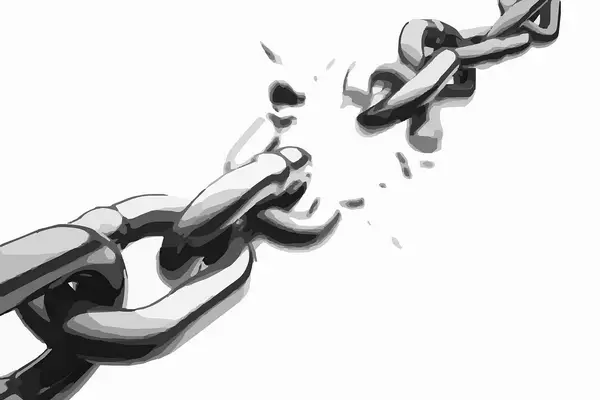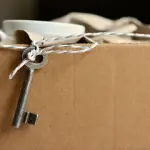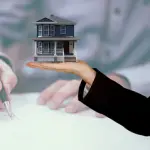
Fact: according to Which, three out of ten property purchases fall through. In the same Which survey 21% of failed purchases were as a result of a problem with the house chain.
What happens when a house chain breaks? When a house chain breaks, where ever the failed purchase lies within the chain, this will affect all the buyers and sellers across the whole house chain. This includes the final seller at the top of the chain and first buyer at the bottom of the chain.
What does “House Chain” mean when buying a property?
You have a house chain (also known as a sales chain, a property chain or a conveyancing chain) when there are three or more properties involved in the overall transaction. This means that all the buyers and sellers in the chain are equally dependent on each other for their transaction to happen.
What is a broken chain in a property transaction?
A broken chain, which is also known as a collapsed chain, is when any of the transactions fall through in the house chain. The more houses there are in a house chain, the greater the risk that something will go wrong and the chain will be broken.
The potential for a break in the chain is probably the number one reason why selling a house is so stressful. This is why I never buy and sell a house at the same time. I always sell and rent before buying again. I recommend you take a quick read of my article on this strategy, which includes 15 advantages of selling and renting before buying again.
You may also want to take a read of this article which explains how to deal with the stress of selling your house. Which includes 7 methods to achieve reduced stress levels.
How can a house chain collapse?
House chains can collapse due to many reasons. The longer the chain, the more reasons that can come into being to cause a collapse. These reasons include the following:
- One of the buyers in the chain not being able obtain a mortgage.
- A person in the house chain gazumps their buyer by accepting a higher offer from another buyer.
- One of the buyers gazunders their seller by offering less than what they originally offered and the seller rejects the lower offer.
- Problems found during the survey on one or more of the properties in the house chain.
- One of the buyers or sellers change their mind.
- One of the buyers or sellers has a change in personal circumstances, for example they lose their job.
Which end of the property transaction is the top of the house chain?
The top of the house chain is the person who owns a property which they can move out from, without needing to buy another property.
For example, the top of the house chain needs one of the following types of seller:
- A person at the top of the house chain is moving into rented accommodation.
- The vendor at the top of the chain may have already purchased another house. Which means they are therefore not dependent on the sale of their house. In fact they may have already moved out.
- The house at the top of the house chain is a new build owned by a builder or developer, who are not dependent on an onward purchase.
- The house at the top of the chain is a probate sale. Which is because the buyer has died.
- The person is moving into a retirement home or a care home.
- It’s a repossessed property being sold by a bank.
- It’s someone’s second home.
- The property is an investment property.
Which end of the property transaction is the bottom of the house chain?
The property at the bottom of the house chain is the house that’s owned by the person who needs to sell before any of the other transactions can happen. But for this to be the bottom of the chain, they need to find a buyer who does not need to sell a house in order to buy.
For example, the bottom of the house chain needs one of the following buyers:
- Their buyer could be a first time buyer.
- Their buyer may not need to sell the house they own. For example, they may be renting it out as a buy to let instead of selling.
- The buyer may have opted to sell and rent before buying again. If you are interested in this strategy, as already suggest above I recommend you take a quick read of this article which explains the 15 advantages of this strategy.
What happens when a house chain breaks if the bottom of chain pulled out?
Where the bottom of the house chain pulled out, it means that all the onward sellers no longer have a buyer. For example, Mr X is buying a house from Mr Y, who is then buying a house from Mr Z.
If Mr X pulled out from the bottom of the chain, Mr Y no longer has a buyer. The knock-on effect is that because Mr Y’s has lost his buyer, he can no longer proceed with the purchase of Mr Z’s house.
Bottom of chain pulled out – what’s the solution?
In the above example where Mr X has decided not to by Mr Y’s house, Mr Y has a number of options. These include the following:
- He decides to remain in his house and doesn’t sell at all. This leaves Mr Z without a buyer so he will need to sell to someone else.
- Mr Y re-markets the property in the hope to find another buyer to complete the bottom of the chain once more. This relies on Mr Z being happy to wait for him to re-sell his house.
- Mr Y decides not to sell his house, but instead converts his mortgage into a buy to let mortgage to raise the deposit money he needs to buy the house from Mr Z. This may delay the sale of Mr Z’s house by the time taken to remortgage My Y’s house, but this can be done in a matter of a few days. However, it’s recommended to use a good mortgage broker.
- Mr Y decides to sell to a house buying company. Please take a read of this article about how companies that buy houses work. Or contact us if you are interest in this option if you need to sell your house fast. In this case Mr Z’s house sale may be delayed slightly, but as house buying companies can often move quick quickly, the delay should not be too long.
What happens when a house chain breaks if the top of chain pulled out?
Where the top of the house chain pulled out, it means that all the upward buyers no longer have a house to buy. For example, Mr A is buying a house from Mr B, who is then buying a house from Mr C.
If Mr C pulled out from the top of the chain, Mr B no longer has a house to buy. The knock-on effect is that because Mr B has lost his onward purchase, he can no longer proceed with the sale of his house to Mr A.
Top of chain pulled out – what’s the solution?
In the above example where Mr C pulled out of the top of the chain, Mr B has a few options. These include the following:
- Mr B may decide not to move at all. This leaves Mr A with no house to buy and he will need to look for another house to buy.
- Mr B can look for another house to buy. This assumes that Mr A is happy to wait for Mr B to find another house to buy.
- Mr B can move into rented accommodation and look to buy later. This should not hold up the house chain, which means Mr A should be happy.
How does the transaction happen when there’s a house chain?
For the house chain to work as a linked transaction, every person in the chain needs to agree on the same date for a simultaneous exchange of contracts as well as a subsequent same date for a simultaneous completion of contracts.
For this to happen, all of the conveyancing solicitors involved in the transactions have to liaise with their respective buyers at the same time as liaising with the respective seller’s solicitor to agree these two important dates for the house chain to complete.
What is a closed chain vs an open chain in property?
A closed chain in property is when all the properties in the chain are sold subject to contract. This means that each seller in the chain has accepted an offer from a buyer and are proceeding to exchange of contracts. Before all the properties in the chain are sold subject to contract it’s known as an open chain.
What is the longest house chain ever known?
The longest a house chain is likely to be is 10+ people in length. But I have read somewhere as the longest house chain as 24 people! If you end up in a chain of 10-plus people, you’ll need a bit of luck and a lot of pushing by the estate agents and solicitors to get this transaction to happen.
Also with a long chain like this it becomes more of a challenge to agree upon exchange dates and completion dates across the whole transaction. The longer the chain, the longer the timeframe involved for the transaction to finally complete.
What is the average property chain length?
The average property chain length is likely to be somewhere between 3 and 10 properties in length.
Is it possible to have a circular house chain?
You occasionally get a circular house chain where the person at the top of the chain buys the property at the bottom of the chain. The person at the top of the chain may buy the property at the bottom to live in it, or to buy it as an investment to rent it out.
Often times the person at the top of the chain will do this to keep the chain intact and to stop a broken chain from happening. If you consider a long house chain of 10+ people in the chain, it’s likely the person who owns the house at the top of the chain will be relatively wealthy. They are therefore more likely to be able to afford to complete the house chain circle.
What does chain free mean?
If you find a property listed as chain free, it means the seller doesn’t need to buy another property in order to sell their current one. It often means the person who is chain free is moving into rented or has already bought their new home, and as a consequence means there’s less chance the deal will fall through.
If you find a property advertised as chain free this is good news as a buyer. A complete list of reasons why a property might be chain free include:
- The vendor is moving into rented accommodation.
- The vendor has already bought a new house.
- It’s a new-build property.
- The property is a probate property as the buyer has died.
- It’s someone’s second home.
- The property is an investment property.
- It’s a repossessed property being sold by a bank.
- The seller is moving abroad.
- The seller is moving in with a partner or friend.
I hope you’ve enjoyed this article about what happens when a house chain breaks
If you’ve enjoyed this article about “what happens when a house chain breaks” please share it on your favourite social media site.
Also, if you have any questions, please feel free to comment below too. Alternatively, if you need more help, please feel free to contact us on our contact us page here. Or join the discussion and ask your question in the property forum.





I am selling my flat and buying a house. I am bottom of the chain. There are 6 properties in the chain. If I pull out of the sale and purchase, before exchange of contracts, what costs am I liable for.
Hi Philip, thank you for your question. I am assuming you are in England or Wales for my answer to apply, but on the assumption you are and on the basis you’ve not yet exchanged contracts, you will only be liable for your abortive legal fees you’ve incurred so far to date. The legal fees may be the full amount quoted if you’re nearing completion, as most of the legal work will have already been done. You will have already incurred the search fees etc. for the property you are purchasing, so you won’t get these back. Please check with your solicitor as they will be able to confirm what their charges are at this point.
You won’t get any costs back from the valuation or survey fees you paid for the property you are purchasing either. Also, depending on what contract you signed with your estate agent will depend on whether you still have to pay their fees. But most estate agents only get paid their commission when the property sale completes, so you probably won’t have to pay the estate agent either.
Can I ask why you’ve decided to pull out at this stage of the buying and selling process?
Hi Russel
I am purchasing a property ( i put an offer, they are considering) and i am at the bottom of the chain as a first time buyer. The vendors would vacate. Is there any possibility i may still loose the flat if chain pulled out somewhere?
Hi Diana, thank you for your comment and question.
If I understand your question correctly and what the vendors are saying is they are prepared to sell and vacate their house so you can proceed. I’m assuming the vendors intend to move into rented accommodation perhaps or in with relatives until their onward purchase proceeds to completion. If this is the case, which you will need to clarify with the vendors, then assuming they don’t change their mind as things progress, you probably will not lose the flat.
They may of course change their mind if the property they are buying falls through, or if further down the chain something goes wrong which prevents them from proceeding on their purchase. But if they are keen to sell, which is why they are prepared to move out, then you should be okay. But I recommend you speak with the vendor, or with the estate agent and ask them to speak to the vendor to clarify exactly what they mean.
Please update me with what happens, Russell